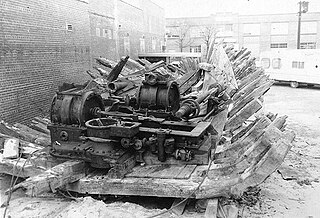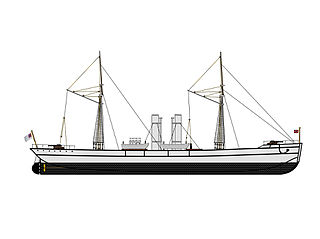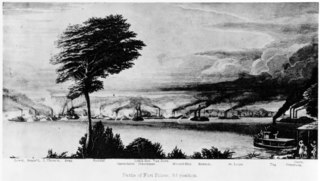See also
- Jefferson Davis (privateer), confederate privateer brig.
- List of ships of the Confederate States Navy
CSS Jeff Davis may refer to the following ships of the Confederate States Navy:

CSS Jamestown, originally a side-wheel, passenger steamer, was built at New York City in 1853, and seized at Richmond, Virginia in 1861 for the Virginia Navy during the early days of the American Civil War. She was commissioned by the Confederate States Navy (CSN) the following July, and renamed CSS Thomas Jefferson but was generally referred to as Jamestown, after Jamestown, Virginia.

USS Vicksburg may refer to the following ships of the United States Navy:

USS Seneca was a Unadilla-class gunboat built on behalf of the United States Navy for service during the American Civil War. Seneca was outfitted with guns for horizontal fire as well as with two howitzers for bombardment of shore targets. With her crew of 84, she was assigned to the Union blockade of the Confederate States of America.

The United States Ram Fleet was a Union Army unit of steam powered ram ships during the American Civil War. The unit was independent of the Union Army and Navy and reported directly to the Secretary of War, Edwin M. Stanton. The ram fleet operated in coordination with the Mississippi River Squadron during the Union brown-water navy battle against the Confederate River Defense Fleet for control of the Mississippi River and its tributaries.

The Battle of Elizabeth City of the American Civil War was fought in the immediate aftermath of the Battle of Roanoke Island. It took place on 10 February 1862, on the Pasquotank River near Elizabeth City, North Carolina. The participants were vessels of the U.S. Navy's North Atlantic Blockading Squadron, opposed by vessels of the Confederate Navy's Mosquito Fleet; the latter were supported by a shore-based battery of four guns at Cobb's Point, near the southeastern border of the town. The battle was a part of the campaign in North Carolina that was led by Major General Ambrose E. Burnside and known as the Burnside Expedition. The result was a Union victory, with Elizabeth City and its nearby waters in their possession, and the Confederate fleet captured, sunk, or dispersed.
Three ships in the Confederate States Navy were named CSS Tennessee

CSS Chattahoochee was a twin-screw steam powered gunboat built at Saffold, Georgia; she was christened for the river upon which she was built. The gunboat entered Confederate States Navy service in February 1863.

The CSS Tallahassee was a twin-screw steamer and cruiser in the Confederate States Navy, purchased in 1864, and used for commerce raiding off the Atlantic coast. She later operated under the names CSS Olustee and CSS Chameleon.
Virginia is the name of several ships:
USS Dai Ching was a steam gunboat in commissioned into service in the United States Navy in 1863. She served in the Union Navy during the American Civil War until her loss in 1865.

USS Calhoun was a captured Confederate steamer and blockade runner acquired by the Union Navy from the prize court during the American Civil War.

USS Sumter was a 525-ton sidewheel paddle steamer captured by the Union Navy during the Union blockade of the American Civil War.
The Confederate privateers were privately owned ships that were authorized by the government of the Confederate States of America to attack the shipping of the United States. Although the appeal was to profit by capturing merchant vessels and seizing their cargoes, the government was most interested in diverting the efforts of the Union Navy away from the blockade of Southern ports, and perhaps to encourage European intervention in the conflict.
CSS Forrest was a wooden-hulled Confederate gunboat that saw action in the North Carolina sounds in 1861 to 1862. Despite being considered "worn out", she saw continuous service until destroyed after the battle of Elizabeth City in February 1862.
The Texas Marine Department (1861–1865) was formed in the State of Texas shortly after Texas came under blockade from the Union Navy in 1861. It operated under the control of the Confederate Navy during the Civil War.
Four ships operated by the Confederate States of America were named Beauregard, after P. G. T. Beauregard, a Confederate States Army general.
Tennessee is a ship name.